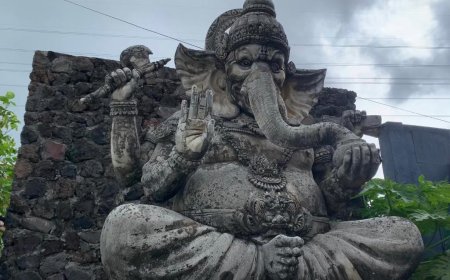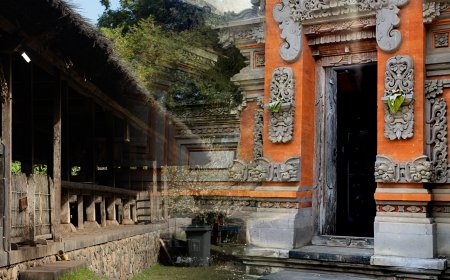Endongan and Tamiang in Kuningan: Deep Symbols of Life Knowledge
Endongan and Tamiang are key offerings in Balinese Hindu tradition, especially during Kuningan Day. Endongan, a small pouch, symbolizes knowledge and wisdom, reminding us of the spiritual and mental provisions needed for balance in life. Tamiang, with its circular shape, represents protection and the natural cycle, symbolizing life’s ever-turning wheel. Together, they embody harmony and readiness in the spiritual journey.
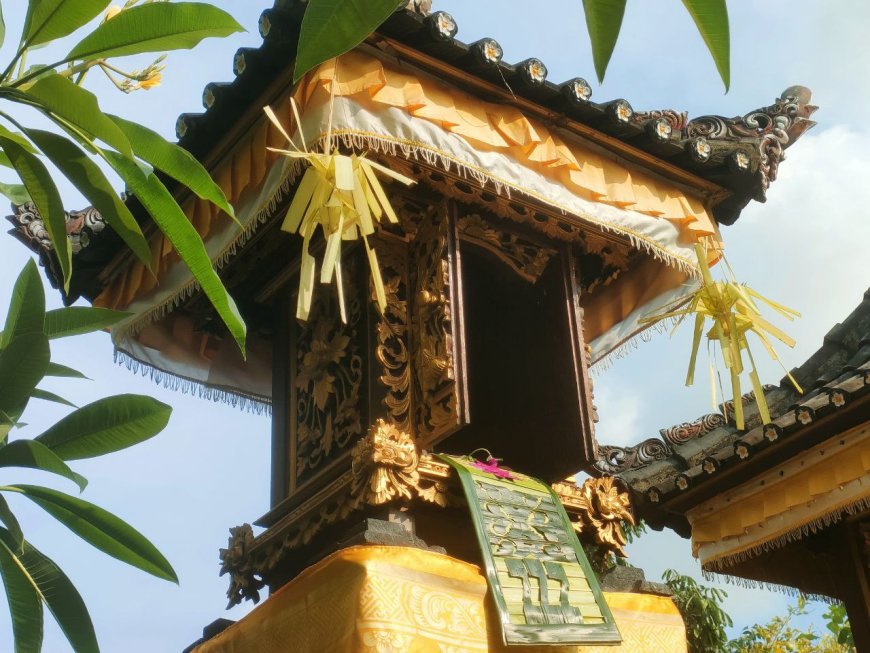
Kuningan Day carries deep philosophical meanings, derived from the root word "uning" or "kuning," which means to know or to be aware. This celebration reminds people to always be mindful of the essence of life and their relationship with the Creator, while also expressing gratitude for the blessings received. During the Kuningan ceremony, there are several important offerings that carry profound symbolism, including Endongan, Tamiang, Ter, Sampian Gantung, and Lamak. Each of these offerings conveys a special message related to protection, provisions, intelligence, warding off evil, and spiritual strength. The Balinese Hindu community is familiar with various ceremonial tools that are rich in symbolic value. Below is the deep meaning of each offering in Kuningan:
1. Endongan: Provisions of Life and Knowledge
Endongan holds deep significance in the spiritual life of Balinese Hindus. According to the Bali-Indonesia Dictionary (1991), Endongan refers to a container woven from coconut leaves used as a carrier for provisions. In the context of ceremonies, Endongan is often used to carry offerings, but symbolically, it represents the provisions of life and knowledge that each individual must possess.

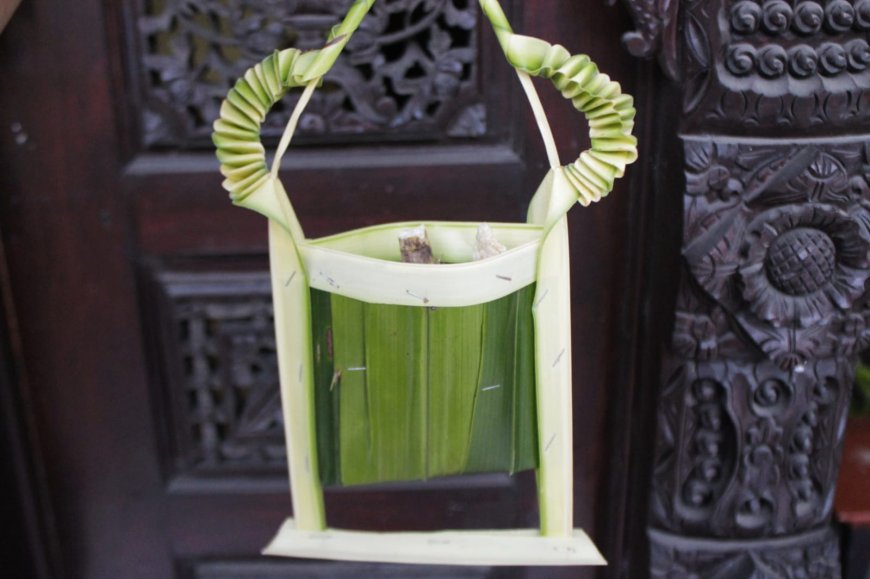
Endongan (Photo Source : Personal Collection)
In daily life, humans must always carry enough "provisions," symbolically represented by Endongan, which contains the elements needed to face life's challenges. These provisions are not only physical food but also spiritual supplies such as Jnana (knowledge) and wisdom. Endongan is also equipped with a "weapon" in the form of Ter (an arrow), symbolizing sharpness of mind based on knowledge and wisdom.
2. Tamiang: Shield of Protection
Tamiang, shaped like a shield, symbolizes protection from threats, both physical and spiritual. In life, Tamiang teaches the importance of self-control when facing challenges. Symbolically, Tamiang represents Dewata Nawa Sanga, the rulers of the nine directions, and the cycle of life, which is likened to the turning wheel of nature.

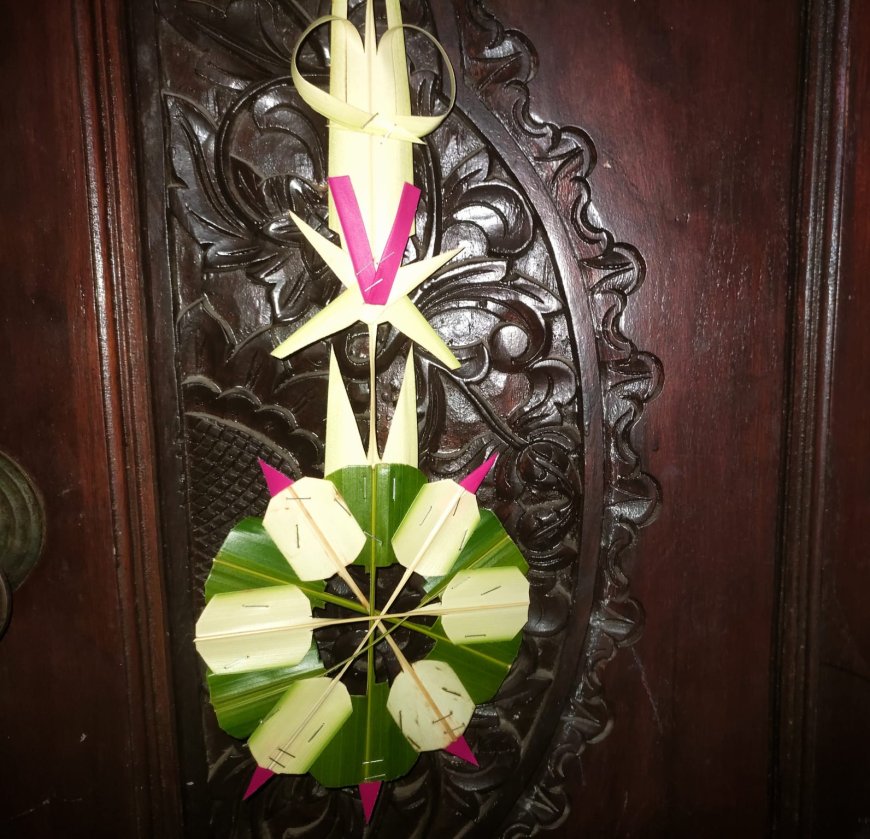
Tamiang (Photo Source : Personal Collection)
More than just protection, Tamiang also symbolizes the cycle of life, related to the concept of cakraning panggilingan, the turning of the wheel of nature that reflects the continuous and forward-moving journey of life, much like a wheel that never stops spinning. This cycle illustrates how life is a series of constant changes, from birth, life, death, and back to its origin.
In Balinese Hindu tradition, the philosophy of Tamiang is not only about protection from physical danger or negative energy but also serves as a reminder of the need for self-control. Humans are expected to maintain balance between mind, body, and soul and to strive to sustain harmony with nature and spirituality. This shield is a symbolic representation of inner strength to face life's various challenges.
3. Ter: Symbolic Arrow
Ter, shaped like an arrow, symbolizes sharpness of mind. In the spiritual context, an arrow is often interpreted as a tool to pierce through ignorance and obstacles. Ter teaches that a sharp and focused mind is the main weapon for making wise and sound decisions when confronting life's challenges.

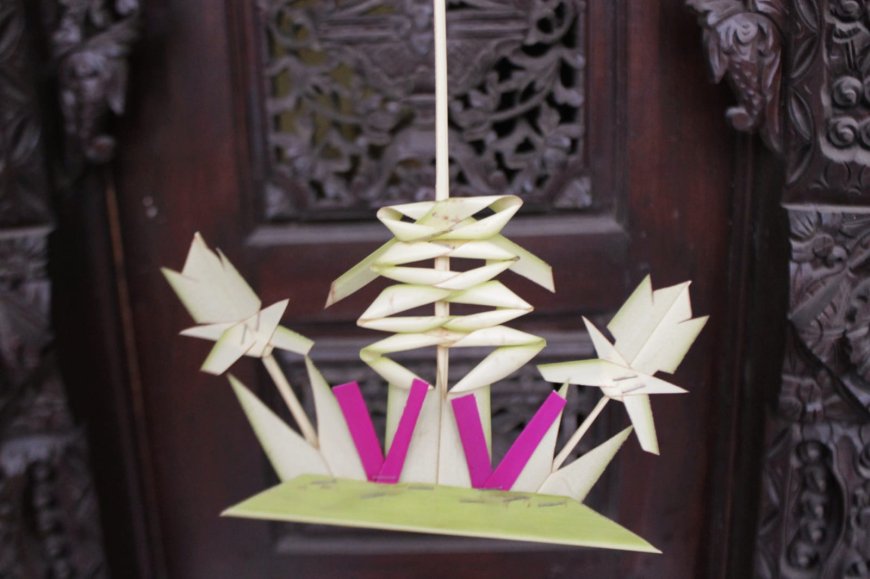
Ter (Photo Source : Personal Collection)
4. Sampian Gantung: Warding Off Evil
An offering tool in Kuningan that serves as a means of warding off evil or negative energy. This symbol is often placed in various locations, such as gates, rooftops, and sacred buildings (palinggih), as a reminder of the importance of protection from threats, both external and internal. Sampian Gantung not only symbolizes physical protection but also teaches Balinese Hindus to maintain inner balance and strengthen their spiritual resolve.

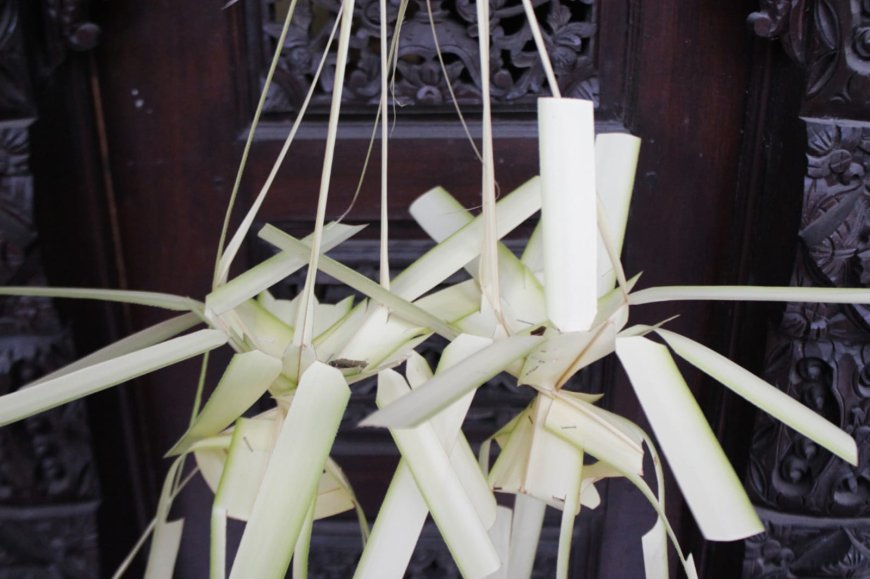
Sampian Gantung (Photo Source : Personal Collection)
The intricate and meaningful design of Sampian Gantung symbolizes humanity's ability to face life’s challenges. Along with the belief that danger can come from anywhere, Sampian Gantung serves as a symbol that humans must always be vigilant and ready to ward off any negative influences, including worldly temptations and their own weaknesses.

Sampian Gantung and Lamak (Photo Source : Personal Collection)
Spiritually, Sampian Gantung reminds us that inner protection comes not only from external sources but also from the strength of self-awareness and emotional control, enabling us to reject anything that disrupts harmony in life.
5. Lamak: More Than Just Decoration
Lamak falls under the category of Cenigan, a ceremonial accessory made from palm leaves, usually woven with bamboo sticks. In practice, Lamak is placed in various locations, such as on palinggih (sacred altars) and pelangkiran (small spaces in homes or temples). Many people believe that Lamak functions as a decorative element to beautify offering places, but it is believed to be more than just an ornament, carrying deep spiritual meaning.
Etymologically, the word Lamak in Kawi or Old Javanese means “mat” reflecting its function as a base for offerings in ceremonies. Just as the earth serves as the foundation of life, Lamak acts as a medium connecting the macrocosmic world with sacred ceremonies in Bali.
Ornamentation of Lamak: Symbolizing the Diversity of the Universe
Lamak is not just a simple mat; it features various ornaments rich in religious and Hindu cosmological symbolism. Some of the symbols commonly found on Lamak include:
- Mountains, believed to be the source of life, symbolizing the connection between the human world and the spiritual realm.
- Kayonan (Tree of Life), symbolizing the wholeness and balance of the universe.
- Cili-cilian, symbolizing Purusa and Pradana, representing the cosmic duality of Rwa Bhineda—the balance between masculine and feminine forces.
- The Moon, Stars, and Sun, which respectively symbolize prosperity, courage, and life-giving energy.

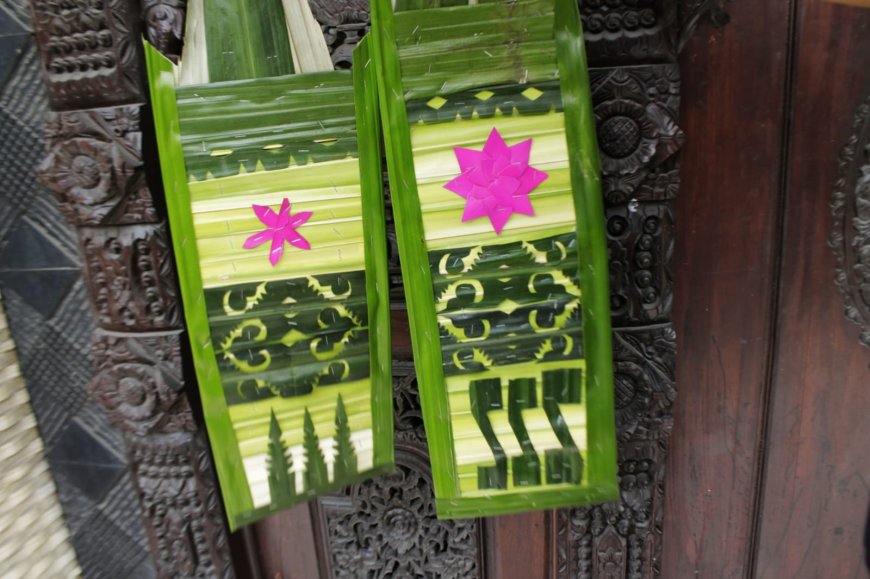
Lamak (Photo Source : Personal Collection)
These symbols suggest that Lamak embodies all aspects of life and the universe. Even the ornamentation such as Pis Bolong (holey coins) commonly found in Lamak is thought to be a result of the cultural fusion between Hinduism and Chinese traditions from the past.
Additionally, Lamak is often paired with Sampian Gantung made from woven young palm leaves, complementing the symbolism found in the set. This reinforces the traditional saying, “Sampian gantung matimpal ajak Lamak” meaning that they complement each other in the context of ceremonies.

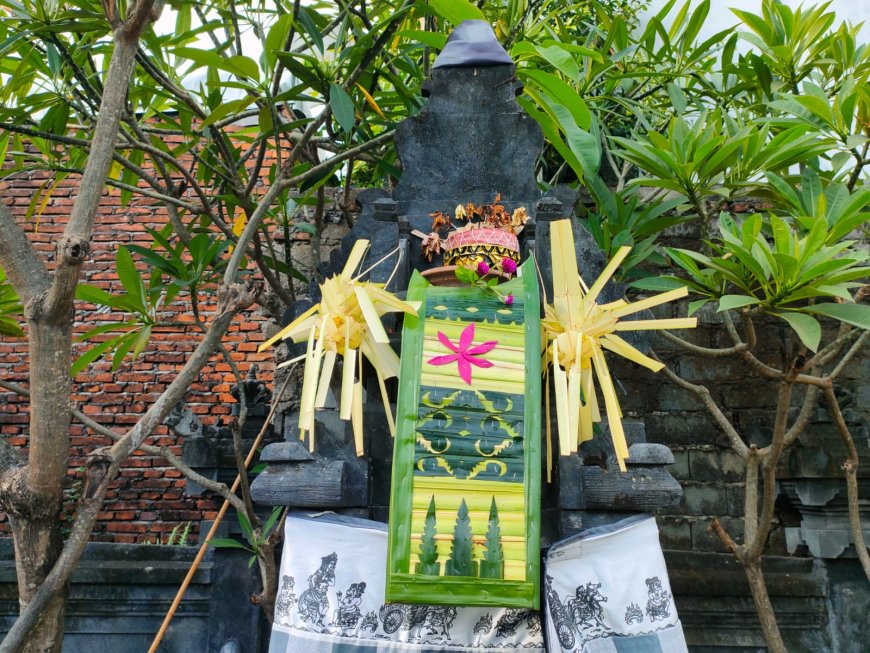
Lamak and Sampian Gantung (Photo Source : Personal Collection)
Three Types of Lamak
According to Lontar Tutur Rare Angon, there are three types of Lamak used according to their function:
- Lamak Terujungan (Teterujung), used in the front yard or lebuh during Bhuta Yadnya or Tawur ceremonies.
- Small Lamak, typically placed at certain palinggih structures like Apit Lawang and shrines.
- Large Lamak, placed in main palinggih like Padmasana and Gedong.
Each type of Lamak is used in different contexts, depending on the scale and type of ceremony being conducted. Besides being paired with Sampian Gantung, Lamak is often paired with Endongan, a ceremonial tool commonly made by Balinese Hindus to be offered for specific purposes.





















































